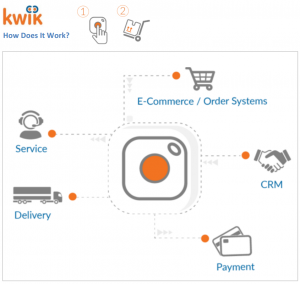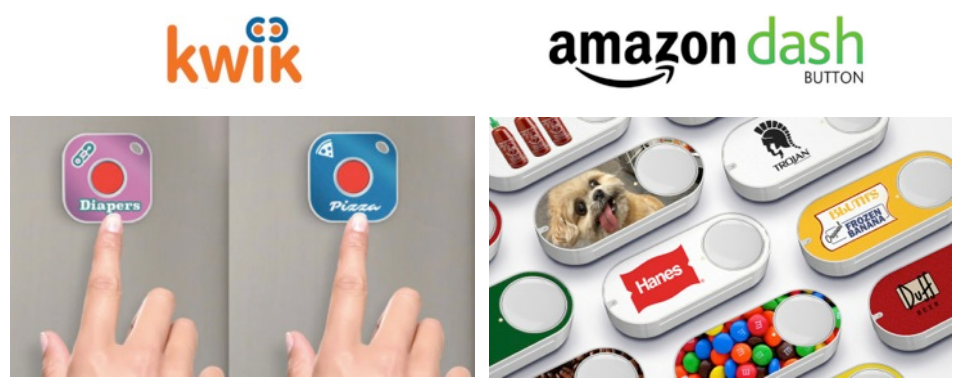One-click physical “Buy” buttons allow users to seamlessly restock household essentials, and Amazon Dash first started offering these buttons in April 2015. Now, Israel-based startup Kwik is challenging Amazon Dash by allowing consumers to automatically reorder items from more of the brands they love with just the press of a button. Although Kwik’s concept may sound similar to Amazon Dash, Kwik is opening the market to a much wider range of brands and consumers.
Unlike Amazon Dash, Kwik is an open IoT platform that will soon be available to all brands across the globe. Brands and suppliers can connect their current order system to the Kwik platform by way of easy-to-implement APIs. Thus, they can get up and running on Kwik with no setup cost and no change to their existing system. This enables businesses to maintain direct contact with customers, a significant advantage that Amazon Dash does not offer. Kwik’s IoT platform also provides a dashboard that gathers customer data, including total clicks, orders and conversion rates. Brands are offered a direct channel to their customers as well as the opportunity to collect real-time data about those customers’ buying habits.
Under the Amazon Dash model, brands must be accepted by Amazon and only Prime-eligible items can be purchased. Also, Dash is a closed system offered only to Amazon Prime users in the US, and it does not release customer data to participating brands.
Although Kwik buttons have yet to be released on the market, the company has carried out successful tests. For example, it tested with Domino’s Israel and found that 72% of the customers who used the Kwik button to order pizza attached an additional item to their order.
The company was founded by Ofer Klein and Shlomi Atias in 2013. Kwik employs approximately 23 employees in Tel Aviv and Palo Alto, and has raised $120,000 as of December 2015.

Kwik is an end-to-end IoT platform, linking customer orders from the button directly to a brand’s existing infrastructure. There are three simple steps brands take in order to integrate their systems with Kwik:
- Determine which products customers will be able to order and define how the button will be branded.
- Connect the current order system to Kwik’s platform using Kwik’s APIs.
- Link the existing payment and delivery process, if available, or connect to third-party providers via Kwik’s cloud services.
Customers connect the Kwik button to their wi-fi network, enter their details into the companion app, and then select which items they will reorder using the button.
Business Model
Like Amazon, Kwik intends to take a percentage of each order. The company plans to sell the buttons at cost to its partners. This year is a proof-of-concept year for the startup. CEO and Co-Founder Ofer Klein said that the company estimates it will have 100,000 live users by the end of 2016 and generate $1.7 million in revenue.
Kwik enables businesses that lack shipping and payment solutions to tap into the reorder marketplace. The company says it connects with existing ordering networks to build a network of delivery and payment providers for brands that do not have preexisting systems. The company will connect brands to third-party providers via its cloud service. In those cases, Kwik will also earn an e-commerce service fee.
Read our full report on Kwik here.
Connect with us on social media:
@DebWeinswig
@FungRetailTech
Facebook
LinkedIn
Subscribe to our YouTube channel
Pinterest
Instagram
